June 2022 Invasive Plant of the Month
SICIM Email
Porcelain-berry (Ampelopsis glandulosa var. brevipedunculata)
Porcelain-berry is a deciduous, woody perennial vine in the the grape family. Native to northeast Asia (China, Korea, Japan, and far eastern Russia), it was introduced to the United States in the 1870’s and has been promoted as an ornamental landscape plant since then. Though still commercially available, its presence in nurseries and garden centers has diminished greatly in recent years with increased awareness of the plant’s invasiveness.
IDENTIFICATION AND BIOLOGY: A member of the grape family, its leaves closely resemble those of native grapes in the genus Vitis. The leaves are alternate and simple with coarsely toothed margins. They typically display 3-5 deep lobes with a heart shaped base. The undersides are sightly hairy. The foliage has no fall coloration of note. Tiny insignificant greenish white flowers are produced in summer. The plant’s most ornamental attribute is its fruit, which is a distinctive multi-colored berry. Colors range from blue, pink, purple, and cream, with several often found together. Each berry contains 2-4 seeds.
The vine is fast growing and can reach a height of 15-20 ft. Non-adhesive tendrils contribute to its ability to climb aggressively.
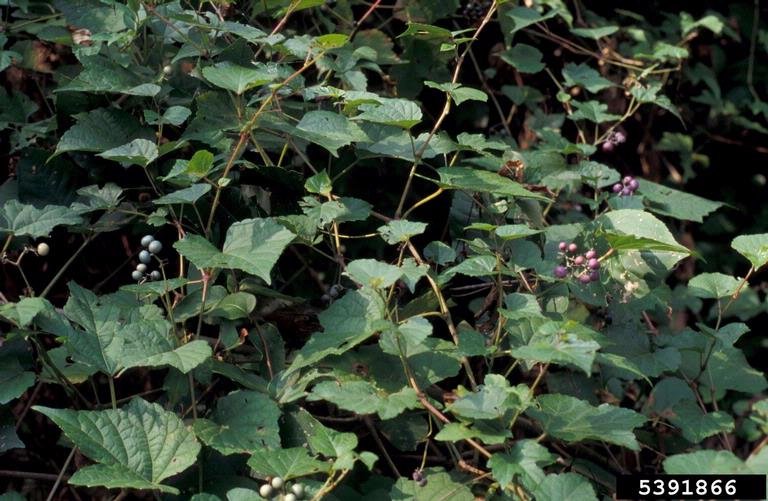
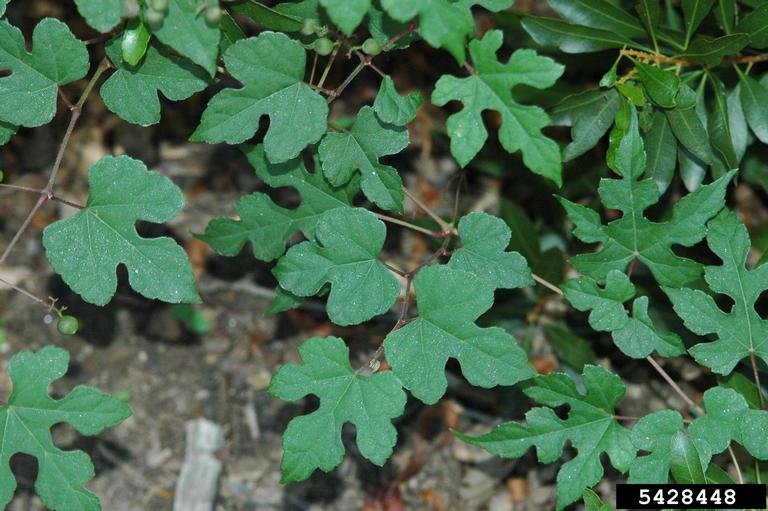
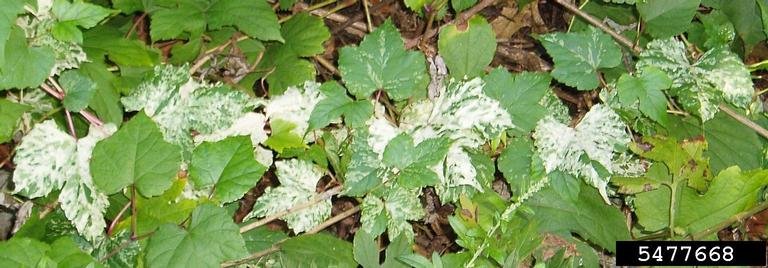
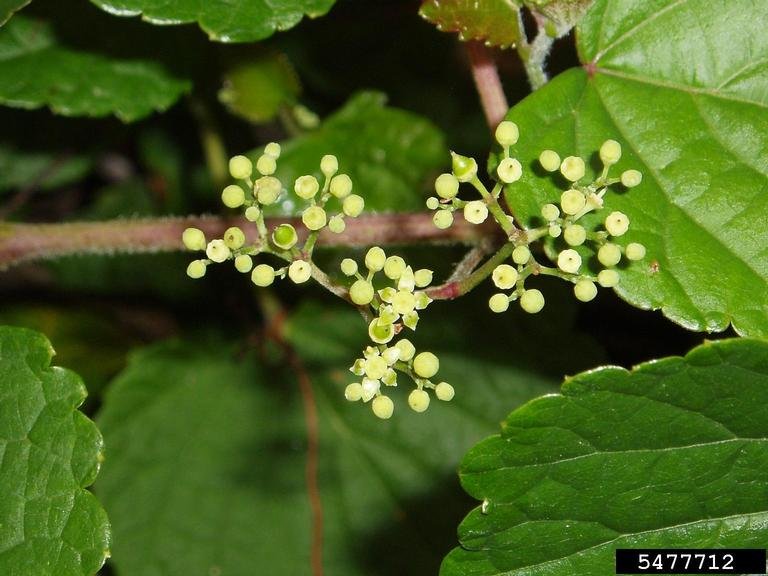
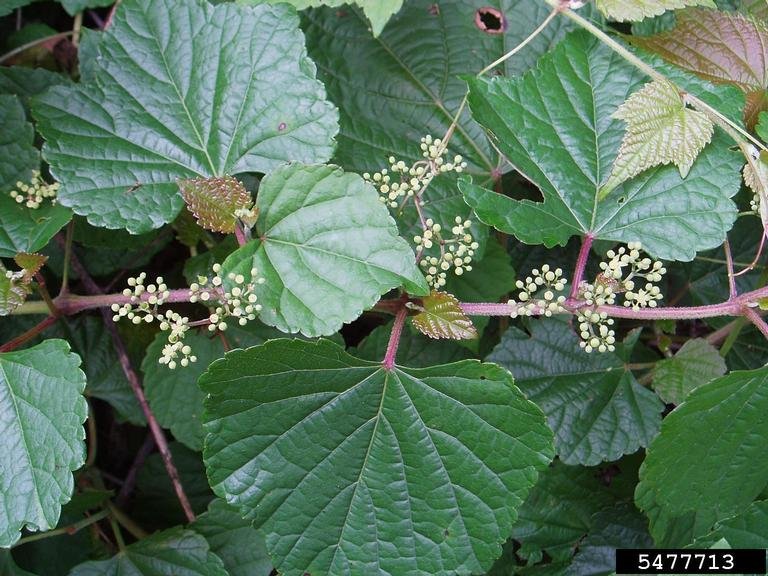

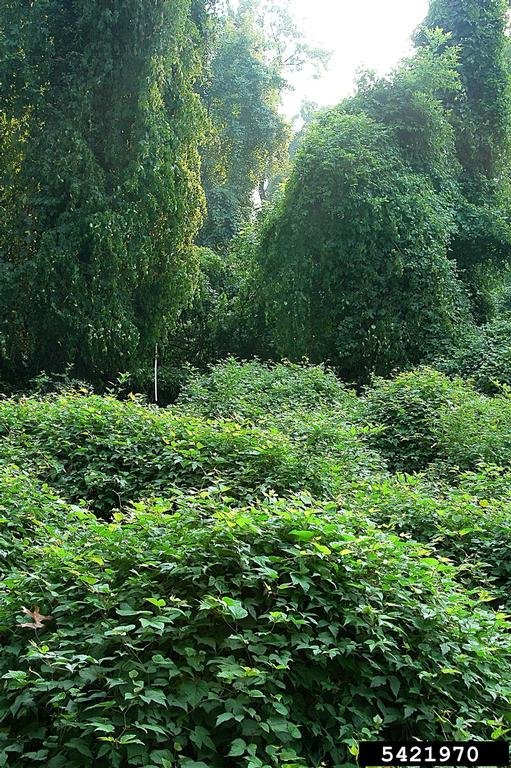
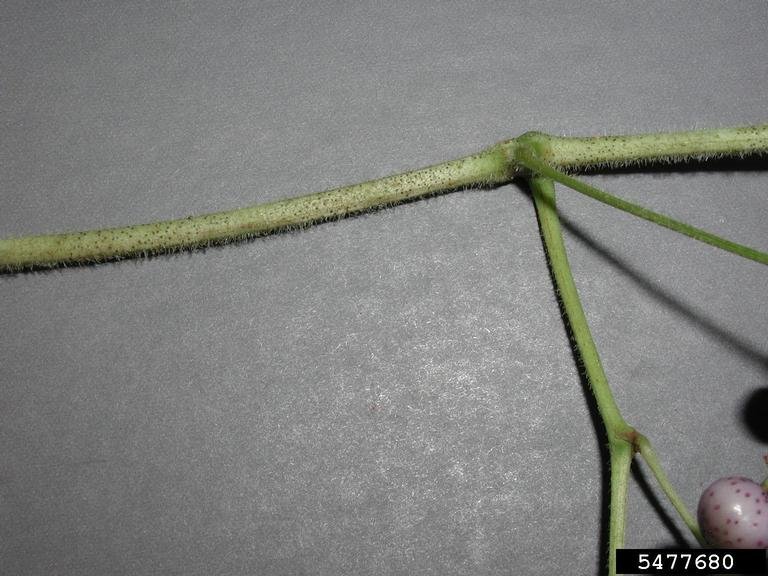
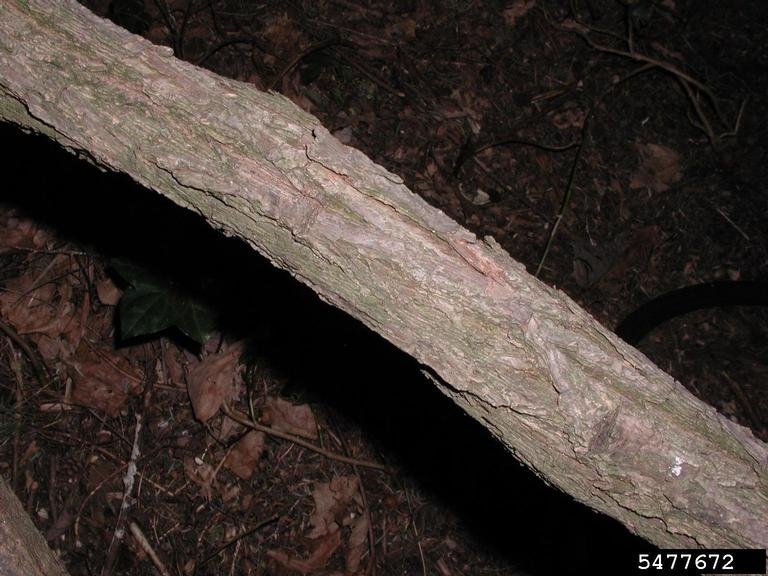
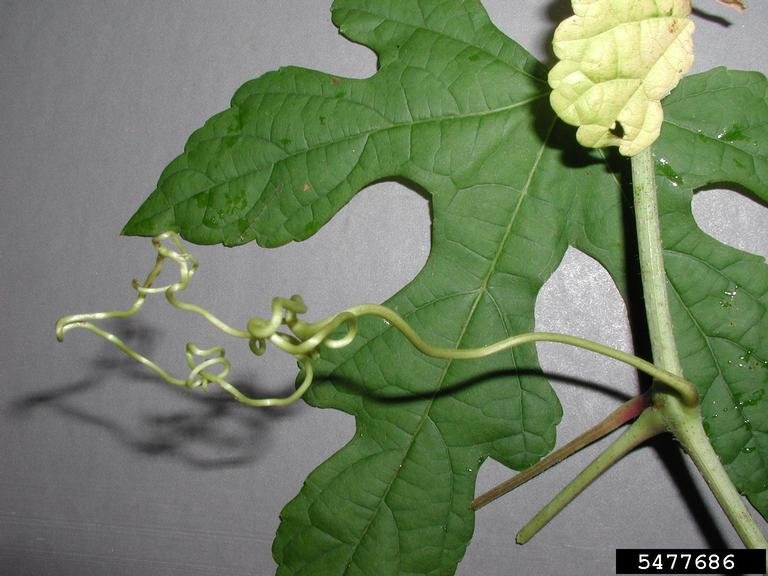
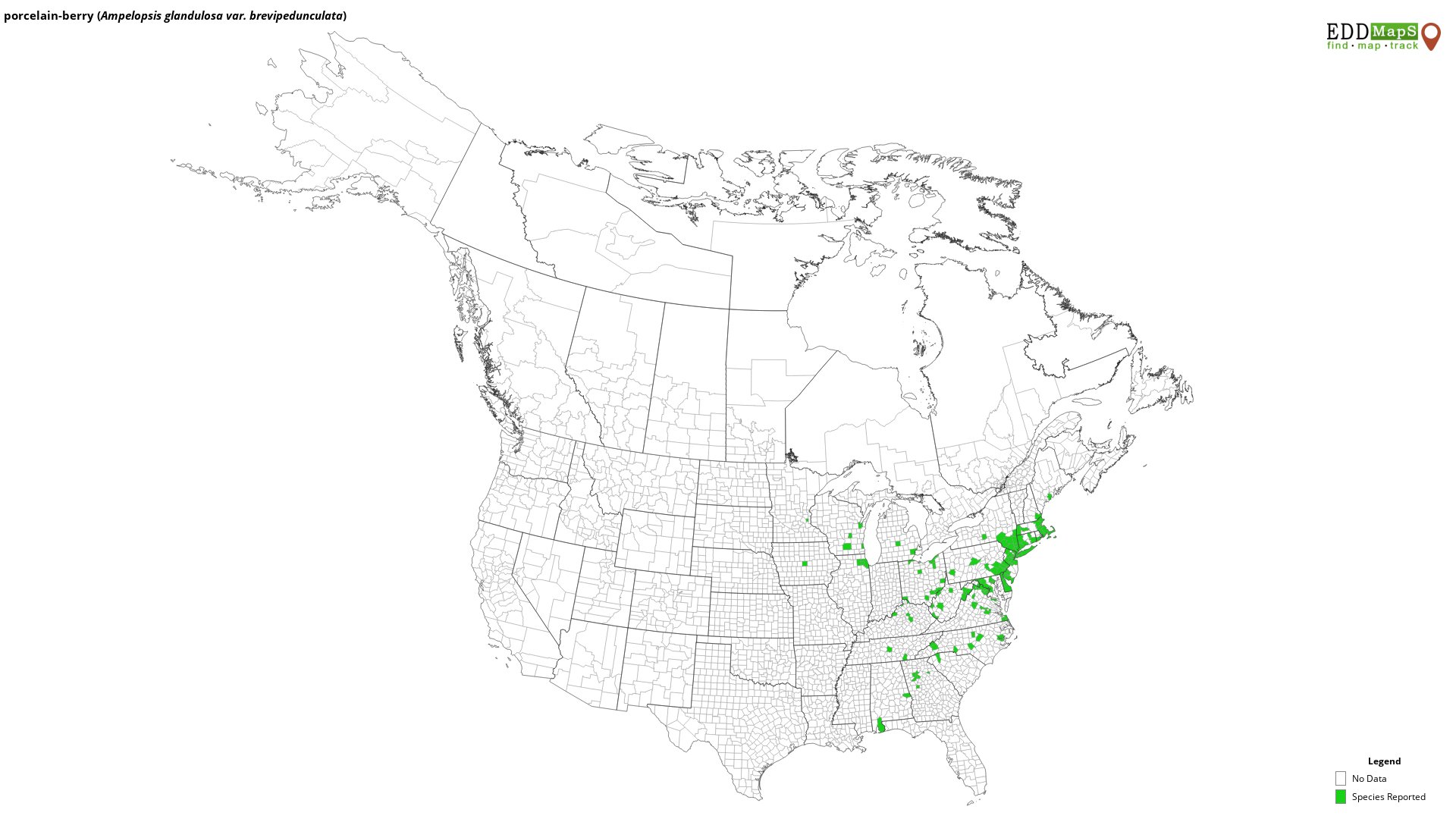
LOOK-ALIKES: A native species of Ampelopsis, A. arborea (common name – Pepper Vine), is common in the southern United States where its rampant growth makes it a pest to many. Its bipinnately compound leaves are 4-8” long and composed of numerous .5-1.25” long leaflets. It produces berries similar to those of A. g. brevipendunculata.
A cultivar of A. g. brevipendunculata called ‘Elegans’ has been promoted for landscape purposes. It has slightly smaller leaves than the species, with white and greenish white variegation.
HABITAT AND DISTRIBUTION: Porcelain-berry is found from New England to North Carolina and west to Indiana, and beyond. It grows well in a wide variety of soil types and settings and can be found in forest edges, river and pond banks, thickets, and woodland openings. It is less tolerant of heavily shaded and permanently wet areas. Its hardiness is listed as Zone 4 to 8.
ECOLOGICAL THREAT: Porcelain-berry overtakes other vegetation and can easily shade out native trees and shrubs. It can form thick monocultures, thereby reducing species diversity and wildlife habitat.
Porcelain-berry spreads aggressively by seed and vegetatively. The colorful fruits attract birds and small animals that eat the berries and disperse the seeds in their droppings. Seeds germinate readily, especially after natural and human disturbance. Seeds can remain viable in the soil for several years. It spreads vegetatively by resprouting from roots, particularly in response to cutting of above ground growth. Porcelain-berry has been found growing downstream from established patches, suggesting that seeds may be water dispersed.
It is a banned species in the states of Minnesota, Wisconsin, and New York.
CONTROL:
Prevention – Do not plant. Remove existing plantings.
Manual – Hand pulling should be done before fruiting to prevent the production and dispersal of seeds. All roots should be removed. Remnant root pieces will easily sprout. Plants pulled while in fruit should be bagged and destroyed.
Chemical – Chemical control in combination with manual methods is effective, but ongoing monitoring of infestation sites, with repeat treatments will be necessary. Systemic herbicides triclopyr and glyphosate have been successful. They should be applied in summer or fall to foliage. Or, the plants can be cut first with application applied to the regrowth.
IMPORTANT: The pesticide label is the law! When using any chemical control, always read the entire pesticide label carefully, follow all mixing and application instructions and use all personal protective gear and clothing specified. Contact the Office of Indiana State Chemist (OISC) for additional pesticide use requirements, restrictions, or recommendations.
We need more information about the spread of porcelain-berry in Indiana! To report it or other invasive species in a location where it has escaped cultivation, use EDDMapS: Early Detection and Distribution Mapping System (EDDMapS): https://www.eddmaps.org/report/
ADDITIONAL INFORMATION AND RESOURCES:
https://www.mda.state.mn.us/plants/pestmanagement/weedcontrol/noxiouslist/porcelainberry
https://www.invasive.org/browse/subinfo.cfm?sub=78266
https://woodyinvasives.org/woody-invasive-species/porcelain-berry/
https://plants.ces.ncsu.edu/plants/ampelopsis-brevipedunculata/
https://extension.umn.edu/identify-invasive-species/porcelain-berry
https://www.invasiveplantatlas.org/subject.html?sub=78266
https://www.eddmaps.org/distribution/uscounty.cfm?sub=78266
LOOK-ALIKES:
Pepper vine: https://www.wildflower.org/plants/result.php?id_plant=NEAR5